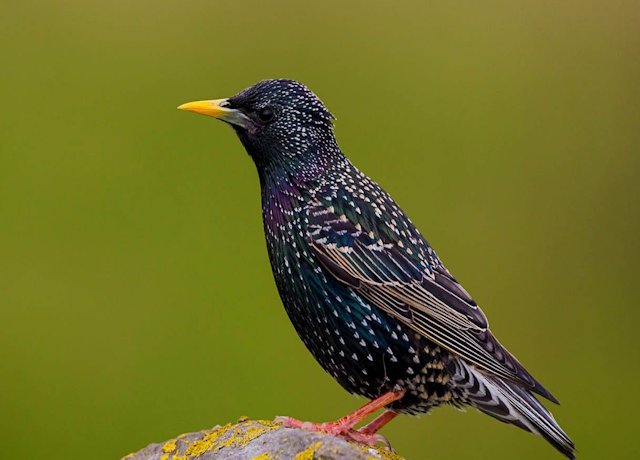Starling

Starling
NL: Spreeuw
D: Star
F: Etourneau sansonnet
Latin name: Sturnus vulgaris (Linnaeus, 1758)
Bird group: Starling
Sound: Usually noisy, especially on communal roosts. Excellent imitator: not only imitates birds, but also, for example, farm and traffic sounds. The most common sound is a raspy ‘tsjierrr’ and a clear, descending ‘pieieoe’.
Field characteristics: 22 cm. Familiar bird with long bill, compact body, short tail and triangular wings, giving a stocky appearance. Occurs mainly in groups that perform acrobatic feats ‘as one man’. Flight characteristic: fast and straight, sometimes shoots through with closed wings, or glides. Walks tough and purposeful, makes a perky, active impression. Adult in breeding plumage has nearly black plumage with strong purple and green highlights. Upperparts with white speckles, in female more than in male. Beak yellow, in male with blue base, legs reddish. Adult outside breeding season is more heavily speckled, has brown legs and dark bill. Juvenile grey-brown with white throat.
Occurrences: Numerous throughout Europe, except in Spain and Portugal, where its place is occupied by Black Starling. Northern populations migrate south(west) in winter; does occur together with Black Starling.
Habitat: Usually near human settlements and livestock. Has no particular habitat preference, preferring short grasslands with nearby trees and houses with nest holes. Also occurs in forest during breeding season.
Food: Omnivorous, but has a strong preference for insects during the breeding season.
Song/call:

